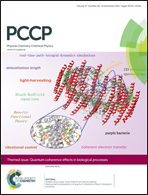Why solid oxide cells can be reversibly operated in solid oxide electrolysis cell and fuel cell modes?†
Abstract
High temperature solid oxide cells (SOCs) are attractive for storage and regeneration of renewable energy by operating reversibly in solid oxide electrolysis cell (SOEC) and solid oxide fuel cell (SOFC) modes. However, the stability of SOCs, particularly the deterioration of the performance of oxygen electrodes in the SOEC operation mode, is the most critical issue in the development of high performance and durable SOCs. In this study, we investigate in detail the electrochemical activity and stability of La0.8Sr0.2MnO3 (LSM) oxygen electrodes in cyclic SOEC and SOFC modes. The results show that the deterioration of LSM oxygen electrodes caused by anodic polarization can be partially or completely recovered by subsequent cathodic polarization. Using in situ assembled LSM electrodes without pre-sintering, we demonstrate that the deteriorated LSM/YSZ interface can be repaired and regenerated by operating the cells under cathodic polarization conditions. This study for the first time establishes the foundation for the development of truly reversible and stable SOCs for hydrogen fuel production and electricity generation in cyclic SOEC and SOFC operation modes.


 Please wait while we load your content...
Please wait while we load your content...